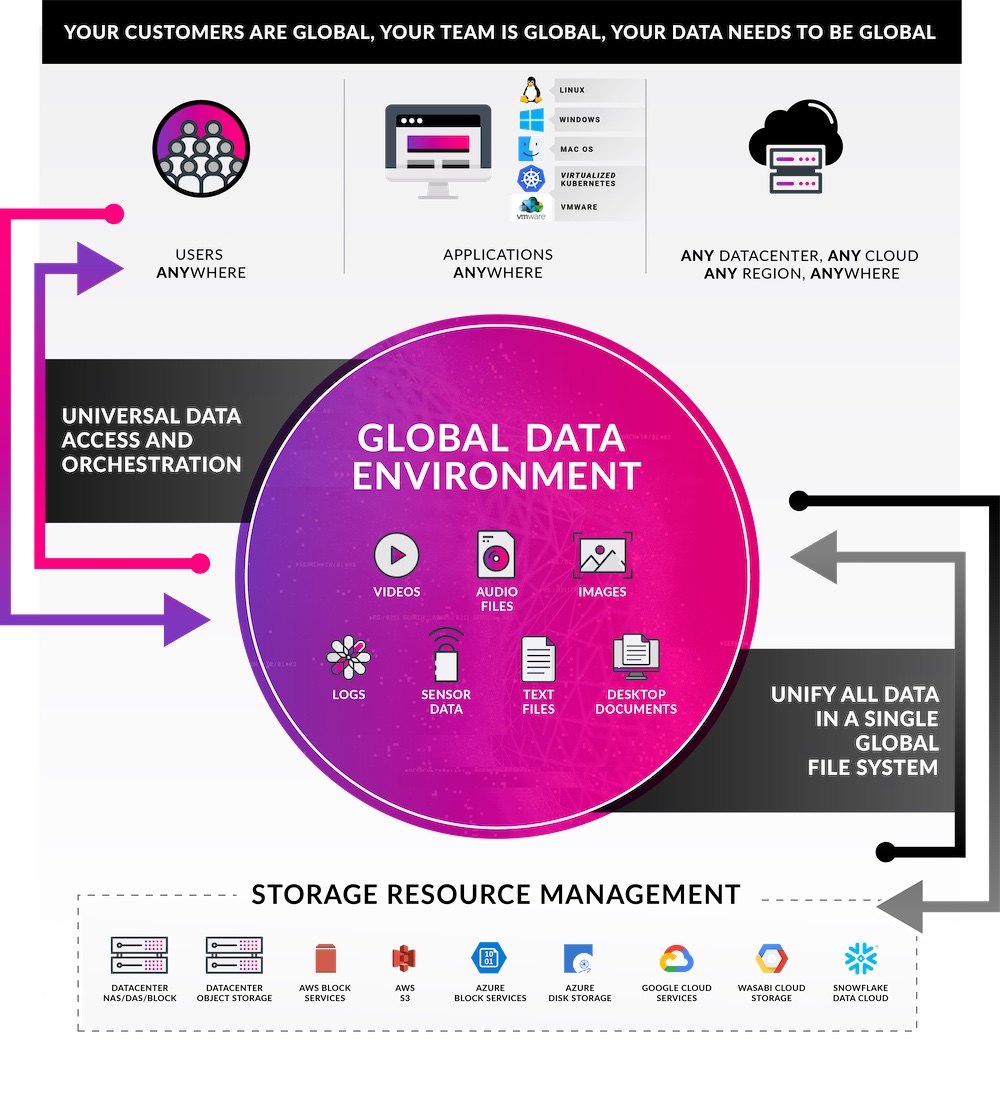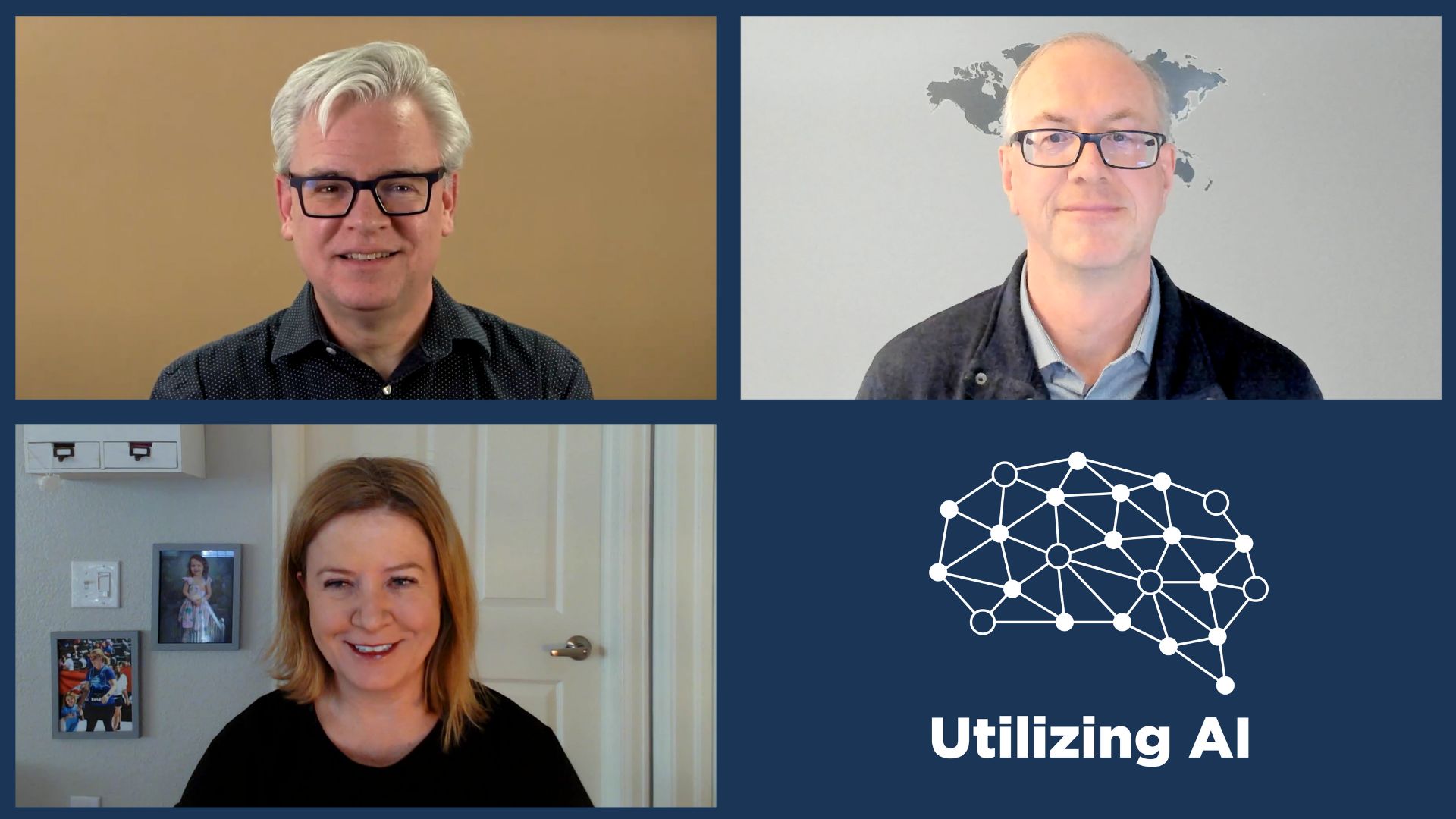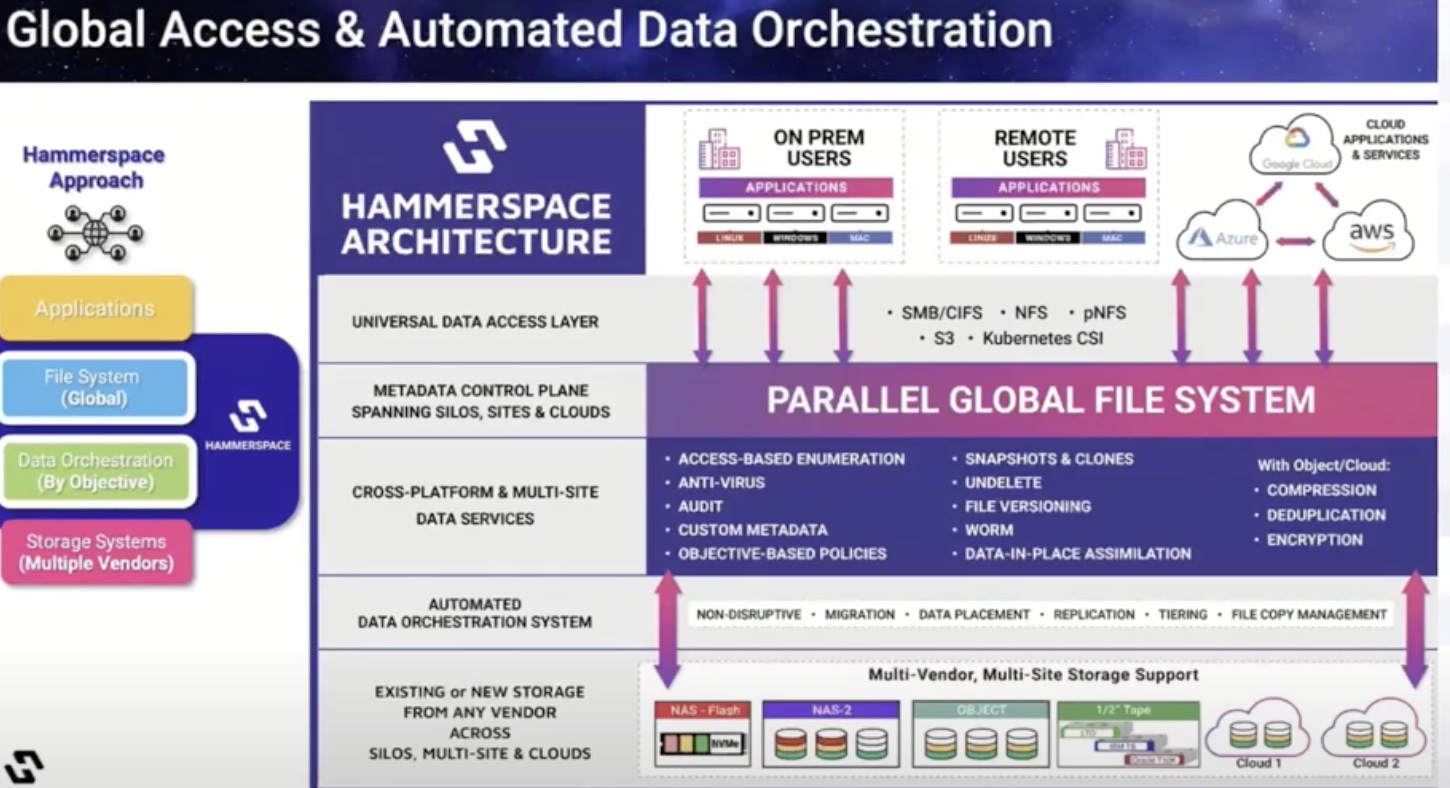If you’re an organization of any size, you already have a distributed data management system. The trouble is, you probably built it by accident, not on purpose.
As your organization was growing, it needed to store data in more than once place. So, you added fileshares to keep private employee HR files separate from Accounting and Sales. Along the way, you added a new storage array from a vendor with more modern technology, but you still needed the old array. So you expanded to more sites, built another data center, added more storage. You moved things to the cloud.
It all just sort of happened, one thing after the other. But what if you could have kept what you had, while also adding a coherent and planned approach to data management, one that copes with the challenge that faces you today?
That’s what Hammerspace offers with its Global Data Environment approach.
Accidental Data Management
With your current system, knowing how many copies of data have been made and where that data actually is at any given time is a significant challenge. How many copies of the customer order dataset are there, exactly? Are the developers working with live credit card data? Can we allow the data scientists in London to look at customer order data from Germany? What about Chicago?
Maybe you had a pretty good handle on things at one stage, but then different people started doing things their own way and demanded different ways of managing their data. Every team had special needs and needed special tools.
And while that was happening, the world around you changed! You added flash storage, but kept your spinning disk arrays because they mostly work and data migrations are hard, tedious work. Cloud made it both easier and harder to manage data. On the upside, data can be anywhere now! On the downside: data could be anywhere now.
Changing government regulations kept adding new constraints on what you could do with the data: HIPAA, GDPR, CCPA, the acronyms piled up as fast as the rules. You added policy, process, and procedures but it was never quite enough to keep up.
And now you look upon the works you have wrought, ye mighty, and despair.
Time To Rethink and Reset
What if I told you this messy situation is actually a wonderful opportunity?
You’ve already done the hard work of figuring out what works and what doesn’t. Your job is actually much easier now because all you have to do now is help people do what they’re already doing.

Adding a Hammerspace Global Data Environment helps you remove the friction of the varied and incompatible technologies you’re using today, but without disrupting the work that’s already taking place. People can not only find the data they need, but they can also access it as if it was local. No more shuffling copies around with complex gateways or random duplication as people manually copy data outside of a controlled process.
Hammerspace makes it easy for people to do what they want to do—access the data—without having to break the enterprise controls that you need to ensure data access safety and security. The right way to do things becomes the easiest way.
Your administrators can efficiently manage any storage resource, from any vendor, wherever it’s deployed. Consistent data management policies can be applied to your entire organisation without needlessly breaking the way local teams access and use data to get their job done.
Moving to a higher-level of abstraction lets you use known-good patterns across multiple technologies and free up time to concentrate on higher-level problems. There’s no shortage of those, so it’s well past time you started doing global data management on purpose.




